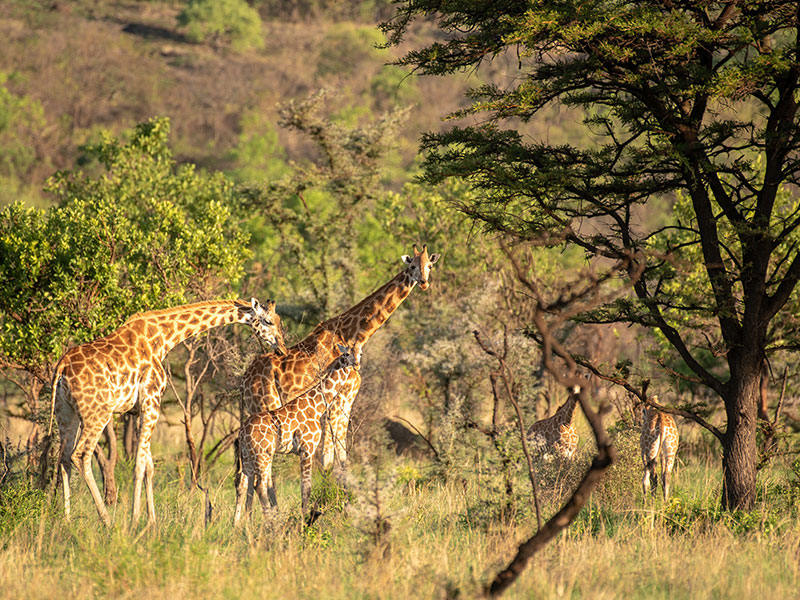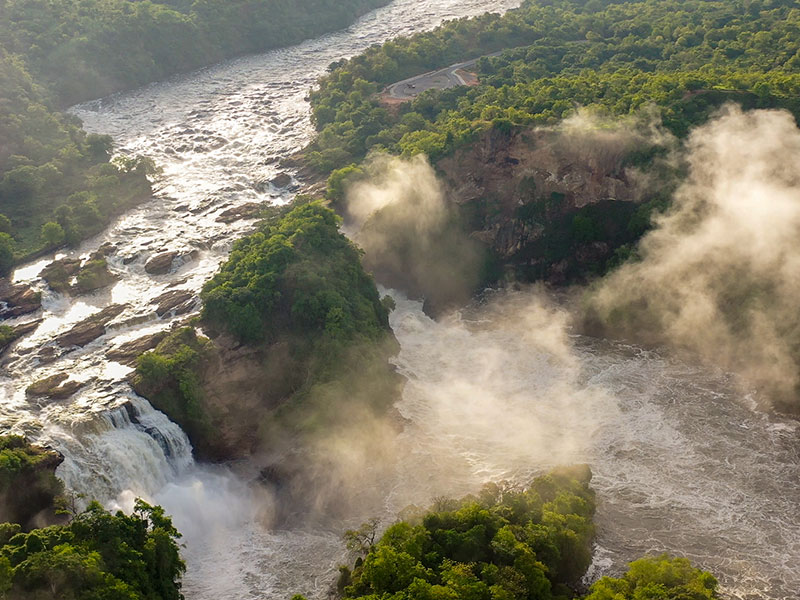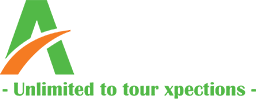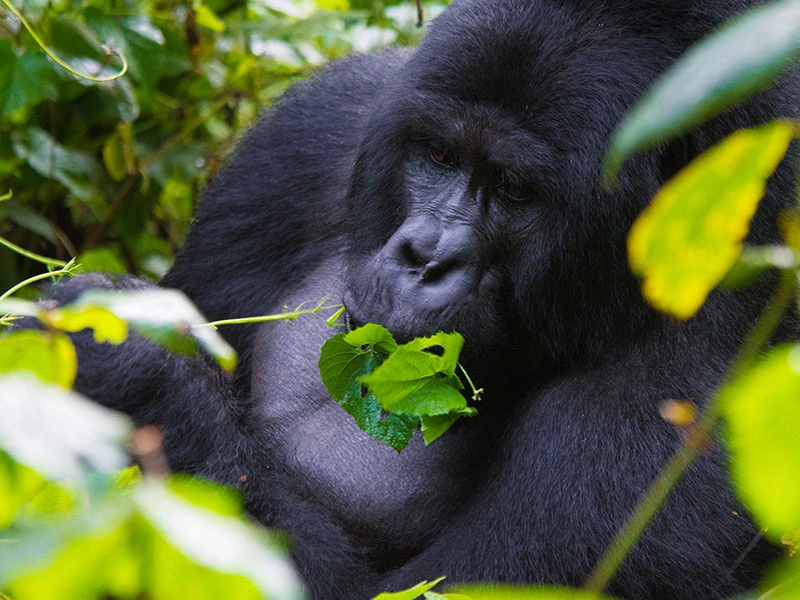
Gorilla trekking is a captivating wildlife experience where visitors track mountain gorillas through dense forests in their natural habitat. Mgahinga Gorilla National Park, located in southwestern Uganda, offers one of the most rewarding opportunities for gorilla trekking. This unique adventure not only brings trekkers close to one of the world’s most endangered primates but also immerses them in the breathtaking beauty of Uganda’s diverse landscapes.
Overview of Mgahinga Gorilla National Park
Mgahinga Gorilla National Park is part of the larger Virunga Conservation Area. It spans three countries: Uganda, Rwanda, and the Democratic Republic of the Congo (DRC). The park is located in the Virunga Mountains and covers 33.7 square kilometers, making it Uganda’s smallest national park. Despite its size, Mgahinga offers rich biodiversity and is home to a range of wildlife species, including mountain gorillas.
The park’s name is derived from the local Kinyarwanda word “Gahinga,” which means “a pile of volcanic stones.” Mgahinga is one of the few places where tourists can see mountain gorillas, a critically endangered species with fewer than 1,100 individuals remaining in the wild.
Mgahinga forms part of the chain of the Virunga Mountains, which are known for their volcanic landscapes and towering peaks. The park is home to three extinct volcanoes: Mount Gahinga (3,474 meters), Mount Sabyinyo (3,669 meters), and Mount Muhabura (4,127 meters). The diverse habitats created by these mountains provide a suitable environment for the rare mountain gorillas and other wildlife.
Mountain Gorillas: A Brief Overview
Mountain gorillas are a subspecies of the eastern gorilla, found in only two regions: The Virunga Mountains and Bwindi Impenetrable Forest. Mgahinga is one of the key locations where these magnificent creatures can be observed. These primates are highly social and live in family groups led by a dominant male. These are known as a silverback, due to the silver hair that develops on his back as he matures.
Mountain gorillas are primarily herbivorous, feeding on leaves, stems, fruits, and bamboo shoots. A gorilla family can consume up to 30 kilograms of vegetation in a single day. Their behavior is characterized by close-knit social interactions, including grooming, playing, and caring for one another.
The Nyakagezi Gorilla Family
The Nyakagezi family is the only habituated gorilla group available for trekking in Mgahinga Gorilla National Park. Unlike other gorilla families that may roam across international borders, the Nyakagezi family has established its home range within Uganda. This group is known for its relatively calm temperament and comprises several individuals, including silverbacks, adult females, juveniles, and infants.
One of the distinctive features of the Nyakagezi family is the presence of multiple silverbacks who peacefully coexist within the group. This is quite unusual since most gorilla families have only one dominant silverback leading the group. The interaction among the silverbacks in this family offers a unique dynamic that is fascinating for visitors to observe during gorilla treks.
Best Time for Gorilla Trekking in Mgahinga National Park
Gorilla trekking in Mgahinga can be done throughout the year. However, the best time to embark on this adventure is during the dry seasons, which occur from June to September and from December to February. During these months, the trails are less muddy, making trekking more manageable. In contrast, the rainy seasons, from March to May and from October to November, can make the forest trails more challenging due to heavy rainfall, but it also adds a dramatic ambiance to the lush environment.
Despite the seasonal differences, the weather in Mgahinga is relatively cool throughout the year, owing to its high altitude. Even during the dry season, occasional showers are expected in this montane forest region.
The Gorilla Trekking Experience
Preparing for the Trek Gorilla trekking begins early in the morning at the park’s headquarters, where visitors receive a briefing about the rules and expectations during the trek. Trekkers are typically divided into small groups, with a maximum of eight participants allowed to visit a gorilla family per day. This limitation is important to minimize human impact on the gorillas and to reduce stress on the animals.
Rangers and experienced guides accompany each group to ensure safety and to help locate the gorillas. Some groups may find the gorillas after a relatively short hike, while others may need to trek for several hours depending on the location of the gorilla family. The terrain can be steep, dense, and slippery, so trekkers are advised to be physically fit and well-prepared for the hike.
Tracking the Gorillas as the trek progresses, guides use clues such as broken branches, footprints, and fresh droppings to trace the gorillas’ location. The guides are knowledgeable about the habits and movements of the Nyakagezi family, making the tracking process smoother. However, since gorillas move freely through the forest, there is always an element of unpredictability.
Once the gorillas are located, visitors are allowed to spend a maximum of one hour with them. This hour offers a rare chance to observe the gorillas in their natural habitat, witnessing their daily activities such as feeding, grooming, playing, and resting. The proximity to these gentle giants creates an unforgettable wildlife encounter.
Rules for Gorilla Trekking to ensure the safety of both trekkers and the gorillas, there are strict rules that must be followed during gorilla trekking:
Maintain a distance of at least seven meters (about 23 feet) from the gorillas. This is to prevent the transmission of diseases, as gorillas are highly susceptible to human illnesses.
Avoid making direct eye contact with the gorillas, as this may be perceived as a threat.
Speak in a low voice and avoid sudden movements to prevent disturbing the animals.
Do not use flash photography, as this can startle the gorillas.
If you are feeling ill, you are not allowed to participate in the trek. This rule is strictly enforced to protect the gorillas from communicable diseases.
Gorilla Trekking Permits
To embark on a gorilla trek in Mgahinga Gorilla National Park, visitors must obtain a permit. The cost of a gorilla trekking permit in Uganda is USD 800 for foreign non-residents, USD 700 for foreign residents, and UGX 300,000 for East African citizens. These fees are used to support conservation efforts, protect the gorillas, and improve community livelihoods around the park.
Permits can be purchased through the Uganda Wildlife Authority (UWA) or licensed tour operators. Given the limited number of daily permits, it is advisable to book well in advance, especially during the peak tourist seasons.
Additional Activities in Mgahinga National Park
While gorilla trekking is the primary attraction in Mgahinga, the park offers other exciting activities that complement the experience:
Golden Monkey Tracking, Mgahinga is also home to the endangered golden monkeys, a striking primate species with bright orange-gold fur. Similar to gorilla trekking, visitors can track these agile monkeys through the bamboo forests of the park. Golden monkeys are known for their playful behavior and are often seen leaping between trees.
Volcano Hiking for adventure enthusiasts, hiking one of the park’s three extinct volcanoes is a thrilling option. The most popular is Mount Muhabura, the highest of the three peaks. A hike to the summit offers breathtaking views of the surrounding landscape, including the neighboring countries of Rwanda and the DRC. The climb is strenuous but rewarding, as it provides a unique vantage point over the Virunga Mountains.
Cultural Encounters, Mgahinga is home to the Batwa, an indigenous pygmy group who were the original inhabitants of the forest before it was gazetted as a national park. Visitors can take part in a Batwa cultural experience, where they learn about the Batwa’s traditional way of life, including hunting, gathering, and herbal medicine. The Batwa cultural trail provides insight into how these forest dwellers have lived in harmony with nature for centuries.
Bird Watching, Mgahinga Gorilla National Park is a birdwatcher’s paradise, with over 180 bird species recorded within its boundaries. Some of the notable bird species include the Rwenzori turaco, black kite, and crowned hornbill. The varied habitats of the park, from bamboo forests to montane woodlands, provide a haven for these birds, making it an excellent destination for avid birdwatchers.
Accommodation Options
There are several accommodation options near Mgahinga Gorilla National Park, ranging from budget to luxury lodges. Some of the popular lodges include:
Mount Gahinga Lodge: This luxury lodge offers stunning views of the Virunga Mountains and provides a cozy atmosphere with beautifully designed cottages, excellent cuisine, and top-notch











